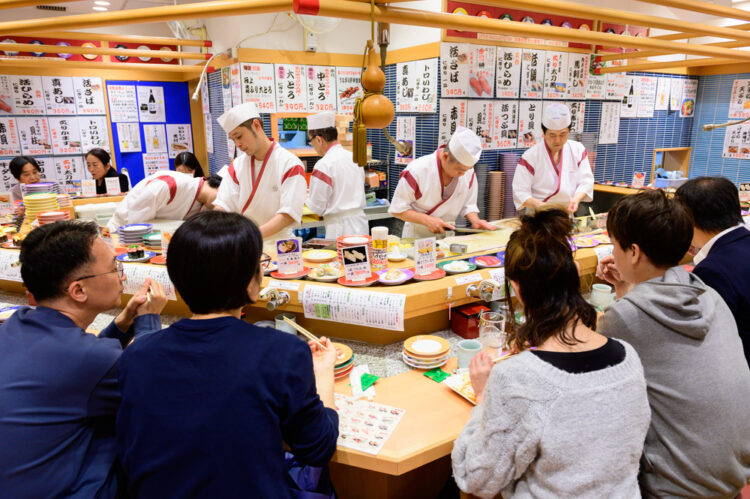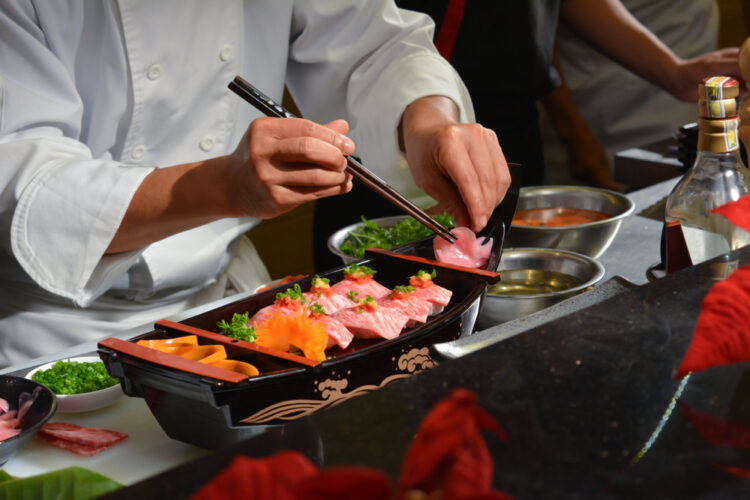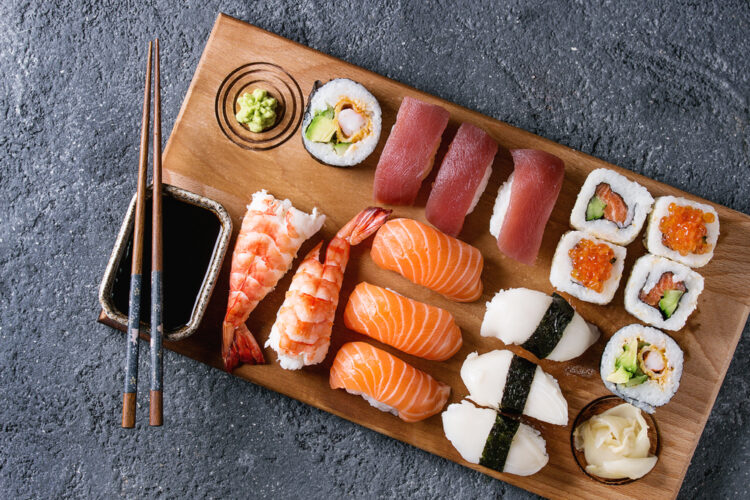Sushi is a popular Japanese dish, but if you’re visiting Japan, it’s important to know how to eat sushi the right way according to Japanese etiquette. There are many different types of sushi available in Japan, so understanding the differences between them can help you order what you like.

Sushi comes in several preparations: sashimi, nigiri, and maki among others. Nigiri is sushi consisting of a piece of fish or other seafood atop an oblong ball of rice. The fish is usually raw but may also be cooked or marinated. Maki is a type of sushi in which ingredients such as fish, vegetables, or egg are rolled inside a seaweed wrapper known as nori and then cut into bite-sized pieces. Both nigiri and maki varieties can come with or without rice, depending on the chef’s preference. Sashimi is thinly sliced raw fish served without rice. Additionally, there are several types of “specialty” sushi available, including temaki (a large cone-shaped roll filled with various ingredients), uramaki with nori sheets inside and fillings outside), gunkan-maki (a type of maki where sticky rice and nori seaweed form an envelope around small slices of fish), and chirashi (rice topped with assorted diced sashimi).

When dining at a sushi restaurant in Japan, there are several considerations to be followed to ensure proper etiquette:
- Wash your hands: Before eating sushi, it’s important to wash your hands thoroughly as a sign of respect. You don’t want to transfer any unwanted flavors or bacteria to the sushi. Towels are typically provided for this purpose.
- It is considered polite to only use your hands when picking up your sushi, or you may use chopsticks, though many do not as there is an effort not to break apart the carefully constructed pieces of nigiri or maki.
- Don’t rub your chopsticks together: In Japan, rubbing chopsticks together is seen as an insult, as it implies that the chopsticks are cheap and splintery.
- Avoid dipping the rice into soy sauce: Sushi rice is seasoned with vinegar, salt, and sugar, and adding too much soy sauce can overpower the delicate flavor. Instead, lightly dip the fish or toppings into the soy sauce.
- Ginger is considered a palette cleanser to eat between pieces of sushi, not as a topping.
- Wasabi (Japanese horseradish) should not be mixed with soy sauce but eaten on its own after being placed on top of your sushi piece. The Chef has already added it to his creations.
- Eat the sushi in one bite: Sushi is meant to be enjoyed in one bite, as it allows you to taste the combination of flavors and textures all at once as this allows the flavor combination intended by the chef to remain intact. If the sushi is too big, feel free to take a smaller bite or ask the chef to make it smaller.
- Be quiet and mindful: Sushi is a form of art, and it’s important to appreciate the flavors and techniques involved while eating. Avoid talking with your mouth full and be mindful of the sounds you make while eating.
- Don’t stick your chopsticks upright in the rice. Sticking your chopsticks upright in the rice is associated with offering food to the dead in Japanese culture and should be avoided.
Enjoy your sushi the Japanese way to fully appreciate the art of the meal!



